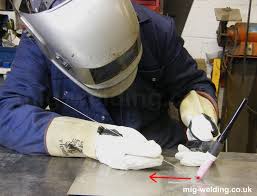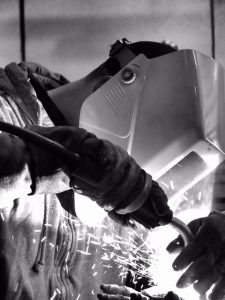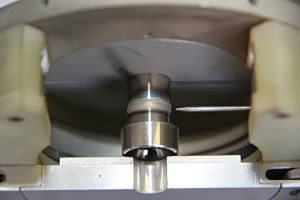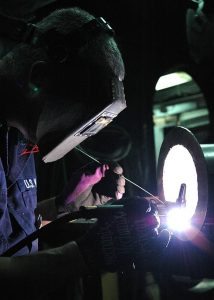TIG Welding Process: Know the When, Where and Why
Giving the highest weld quality, the TIG welding process is one of the most versatile when it comes to the material to be used and its position. When it comes to weld versatility and integrity, this process is the best choice.
TIG welding process gives the highest quality
Of all arc welding processes, it is the tungstel inert gas or TIG welding process that is capable of achieving the highest quality welds. It is also the most versatile when it comes to what can be welded and the position of the welds. Only metal inert gas (MIG) welding comes close, but TIG still comes out on top for weld versatility and integrity. Read on as we go through the basics of this process, along with some of its most common applications.
TIG welding process that is capable of achieving the highest quality welds. It is also the most versatile when it comes to what can be welded and the position of the welds. Only metal inert gas (MIG) welding comes close, but TIG still comes out on top for weld versatility and integrity. Read on as we go through the basics of this process, along with some of its most common applications.
But just like in many industrial processes, quality comes at the expense of time. TIG is generally slower compared to manual metal arc (MMA), but where weld is important, production engineers are prepared to work with the additional process time. However, there are some cases where a welded joint will use TIG along with MIG welding. For instance, when joining pipes for offshore applications, TIG can be specified for the root weld and then MIG for the subsequent runs. This gives high integrity, which is important at the root, along with the quality and speed of MIG for the rest of the joint.
TIG welding is considered to be a very versatile process. The TIG welding process parameters can practically be used with any weldable metals, including different metals with thickness from half a millimeter onward. TIG welding machines are mostly available in current ratings between 150A and 350A and are able to operate at currents as low as 3A for a 150A machine. Also, TIG machines can be used for MMA welding and brazing, which should aid in improving the return on an investment in a TIG equipment.
The most commonly used gas for the TIG welding process for all materials is pure argon
A combination of argon and helium when welding copper and aluminum because added heat is needed fo helium. This the opposite of the MIG welding process, where there is a specific gas or gas mixture for a certain material to be welded. However, TIG operatives have to aware that the right tungsten electrode has to be used. Otherwise, problems can be encountered in striking the arc and maintaining a stable arc. TIG can be done with or without a filler wire, just like oxyacetylene gas welding.
One of the many advantages of TIG welding is that the wold only processes high integrity and give an aesthetic surface finish
Consequently, welds can mostly be left as is without any need for grinding. This is advantageous when it comes to time saved, and it avoids problems with grinding in site, like dust and noise. Depending on the TIG welding material used, the operative can have control over most of the weld parameters, therefore optimizing the weld quality. Modern TIG power sources are lighter and more portable than traditional unis, so on-site TIG welding is commonplace.
The usual applications for TIG welding include architectural stainless steel fabrications like balustrades
More unconventional applications include jewelry, dentistry and titanium. For low-current and fine work applications, TIG is increasingly being used as a more versatile alternative to micro-plasma welding. Skilled operatives are able to produce excellent results with TIG welding, although automation can be economically used on straight arcs and runs to avoid variances associated with operative skill levels or fatigue.
In welding applications, the most costly element is mostly the welding operative. Therefore, it is a relatively simple matter to determine the savings from automating a TIG welding process and the expected payback period that can be expected when automating a TIG welding operation. Among all welding process, TIG requires the highest skill level, primarily because it is a two-handed process, with one hand required for the filler wire and the other for the TIG torch. Even autogenous welding requires good skills.
If a fabricator is considering investing in TIG welding, there are many training providers available nationwide. They can train an operative from scratch or retrain an operative who has used MIG, MMA or gas welding. Interestingly, welders who has had experience with gas welding mostly find it easiest to make the transition because they are used to hand feeding a filler wire. TIG welding is based on a simple concept, but the process is still continually being developed.
Generally speaking, TIG welding is best for niche applications where weld integrity and aesthetics are more important than speed. With this said TIG welding is also the most versatile of all welding processes in terms of the materials is can weld, the material thickness, the option to use a filler wire or not, and the way it can be used for welding of any position. Contact a certified welding company now to help you with your projects.











 You MUST Ask BEFORE Hiring a Welding Company – So You Can Avoid Wasting Your Time AND Hard-Earned Dollars”
You MUST Ask BEFORE Hiring a Welding Company – So You Can Avoid Wasting Your Time AND Hard-Earned Dollars” 
Keep in Touch